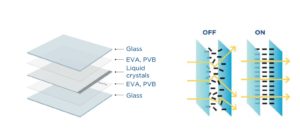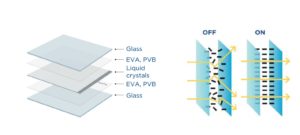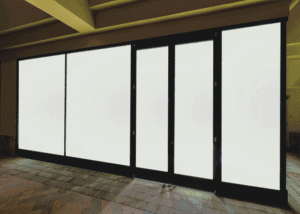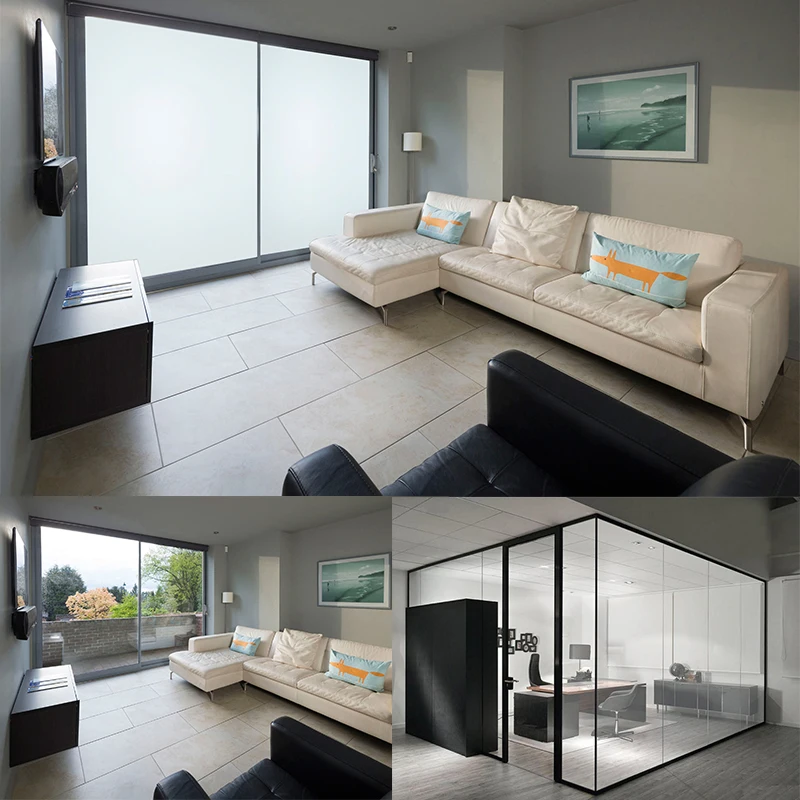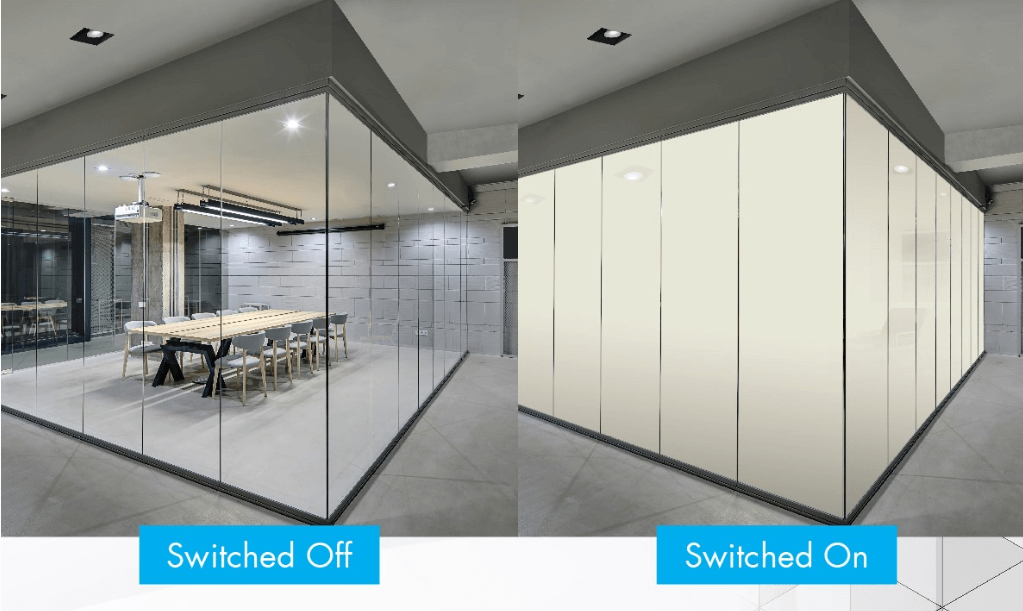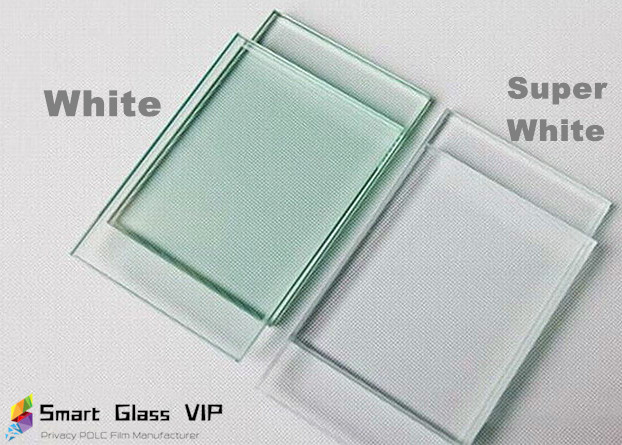1. Structure and principle of dimmable glass;
The scientific name of dimming glass is electro-optic liquid crystal atomized glass (English name: Switchable Transparent Glass, STG for short). Made between, the glass meets the national standards for laminated glass (GB15763.3-2009).
② appearance structure size;
Glass thickness + 0.38mmPVB (EVA) + 0.27mm liquid crystal film + 0.38mmPVB (EVA) + glass thickness. (Glass thickness; 3mm ~ 12mm is acceptable)
Note: glass can be selected; super white, ordinary white, fireproof, LOW-E, coated glass, etc.
2Principle:
Dimming film STF is the core technology of dimming glass, which is independently developed and produced by our company. The films used on the market today include Magic Glass, Switchable Light Control Glass, Smart Window, and smart dimmable glass. The dimming function of the dimming glass is realized by the dimming film. The schematic diagram is as follows.
⑴. STG atomization state
The dimming film is composed of a plastic-liquid crystal core layer sandwiched between two transparent conductive films. The plastic-liquid crystal core layer includes liquid crystal spheres and polymers. The director of the liquid crystal molecules is approximately parallel to the glass substrate. Drip around. The refractive index of the polymer is nP, which is similar to the refractive index of glass, about 1.5, and is an isotropic substance; the extraordinary refractive index and ordinary refractive index of the liquid crystal are not ne, no, respectively. When glass and transparent conductive film are incident on the interface between the liquid crystal sphere and the polymer, since ne is not equal to nP, scattering occurs, and the STG is in an atomized state.
⑵. STG transparent
When an external electric field is applied, an electric field is formed between the two transparent conductive films, the directors of the liquid crystal molecules are aligned in the direction of the electric field, and the vertically incident visible light passes through the glass and the transparent conductive film and enters the interface between the liquid crystal sphere and the polymer. It is perpendicular to the light propagation direction, and no is equal to nP, so it is transmitted. At this time, the dimming glass is transparent.
⑶. STG haze
The main indicator of the optical performance of dimmable glass is transparency. In fact, it is haze. The smaller the haze when the power is on, the better the haze when the power is off. When an external electric field is applied, the light is incident perpendicular to the direction of the transparent conductive film. At this time, although nLC is approximately equal to no, due to the difference between nP and no values, scattering still occurs at the interface between the liquid crystal droplets and the polymer, which is the main cause of haze.
⑷. Perspective
When the dimming film is energized, the angle between the incident light and the dimming film in the vertical direction (referred to as the angle of view α) is not zero, the propagation direction of the light in the STF is not parallel to the director of the liquid crystal molecules, as shown in the figure:
At the interface between the liquid crystal droplets and the polymer, the component of the light vibration in the ne direction is scattered. When a is larger, the scattering is more, so the haze increases with the increase of the viewing angle. This is a characteristic of the photoelectric effect of the liquid crystal.

